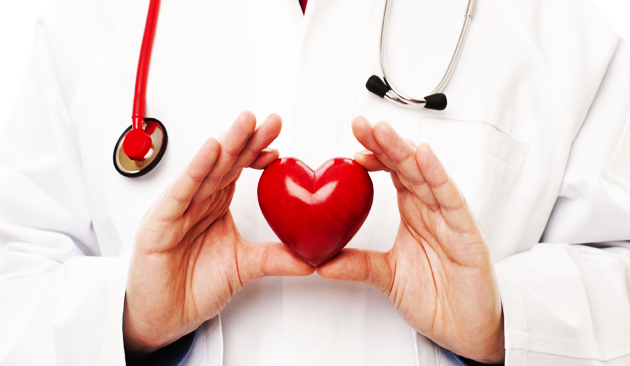Ten Tips for a Healthy Heart Follow them Stay Healthy

Ten Tips for a Healthy Heart Follow them And Keep your Heart Healthy.
By Elizabeth McSpiritt, MD, MPH
.
1. Stop Smoking. This is one of the most important changes you can make to improve your health and prolong your life. Smokers are twice as likely to have a myocardial infarction, or heart attack, than non-smokers. The good news is that once you stop smoking, your risk begins to decrease.
2. Exercise Regularly. Exercising 30 minutes most days of the week will improve your overall health, as well as your cardiovascular health. Women who exercise regularly reduce their risk of cardiovascular disease 30 to 40 percent. Additional benefits include improving your quality of life, helping maintain a healthy weight, reducing cholesterol levels, and demonstrates to children the importance of being active.
3. Reduce Salt Intake. Approximately 90 percent of Americans are eating more than the recommended amount of salt every day. Too much sodium increases the risk of high blood pressure, which leads to heart disease and stroke. On average, Americans take in about 3,300mg of sodium per day, which is much more than the recommended limit of 2,300mg per day. Surprisingly, most of the salt we eat is not from the shaker on the table, but from processed foods, such as breads, pastas and processed meats. By eating foods that are less processed and closer to the source, we can both decrease our salt intake and improve the overall quality of the foods we eat.
4. Eat Heart-Healthy. A healthy diet is one of the best ways to prevent cardiovascular disease. Ensuring that your diet is low in fat, cholesterol and salt and rich in fruits, vegetables and whole grains decreases your risk of heart disease. Decreasing sources of saturated and trans-fats in your diet is a big step in making your diet heart healthy. Major sources of these cholesterol-raising fats include red meat, dairy products, fried foods and packaged snacks. By avoiding these sources and adding at least five servings of fruit and vegetables, your diet will be a building block in your goal of heart health. Unfortunately though, a recent study found that more than 90 percent of Americans fail to consistently eat a heart-healthy diet. These poor eating habits increase the risk of heart disease, stroke and obesity.
5. Maintain A Healthy Weight. Maintaining a healthy weight throughout adulthood decreases the risk of cardiovascular disease, high cholesterol and diabetes. This is especially important in the US today, as 2/3 of the US population is overweight. A Body Mass Index (BMI) >25 is directly associated with an increase with many risk factors of heart disease, including increased cholesterol and diabetes. You can calculate your BMI at http://www.nhlbisupport.com/bmi/
6. Limit Alcohol Intake. Excess alcohol intake can damage the heart muscle, increase blood pressure and lead to weight gain. If you do drink alcohol, do so in moderation-limiting intake to 1-2 drinks per day.
7. Get Regular Check-Ups. Regular visits to your primary care physician can help control blood pressure, cholesterol levels and blood sugar. Chronic, untreated high blood pressure can lead to an increased risk of both stroke and heart attack and a shortened life expectancy. High levels of cholesterol can lead to an increase in fatty deposits in the blood vessels that supply your heart, which can result in a myocardial infarction. Obesity and dietary insufficiencies can increase the risk of Type II diabetes, which is a risk factor. These risk factors are treatable with both lifestyle changes and medications, but the first step is getting these factors identified.
8. Decrease Stress. While the connection between stress and heart disease is unclear, it is clear that chronic stress leads to an increased likelihood of unhealthy lifestyle choices, such as smoking, drinking and eating an unhealthy diet. By decreasing stress in your life, you will increase the quality of your life and may decrease your risk of heart disease.
9. Know the Warning Signs of a Heart Attack. A heart attack is a medical emergency where every second counts. The sooner a heart attack is recognized, the sooner medical attention can be sought. Today, heart attack victims can benefit from new medications that can be given as soon as a heart attack is identified. The sooner these medications are given, the greater the benefit. The most common symptoms of a heart attack are chest discomfort, discomfort in other areas of the upper body, shortness of breath and sweating or nausea. For women, these symptoms may differ. One in three women will not experience chest pain while having a heart attack. Nearly three-fourths of women experience flu-like symptoms in the weeks leading up to a heart attack. The greater the awareness of the signs of a heart attack, the sooner medical attention can be sought.
10. Educate Your Loved Ones About Heart Health. Not only can you decrease your risk factors for heart disease, you can help your loved ones decrease their risk. By incorporating exercise and a healthy diet into your family’s lives, you can keep your Valentine’s heart healthy all year long.
as posted on Liberty Health Newsletter
By Elizabeth McSpiritt, MD, MPH




